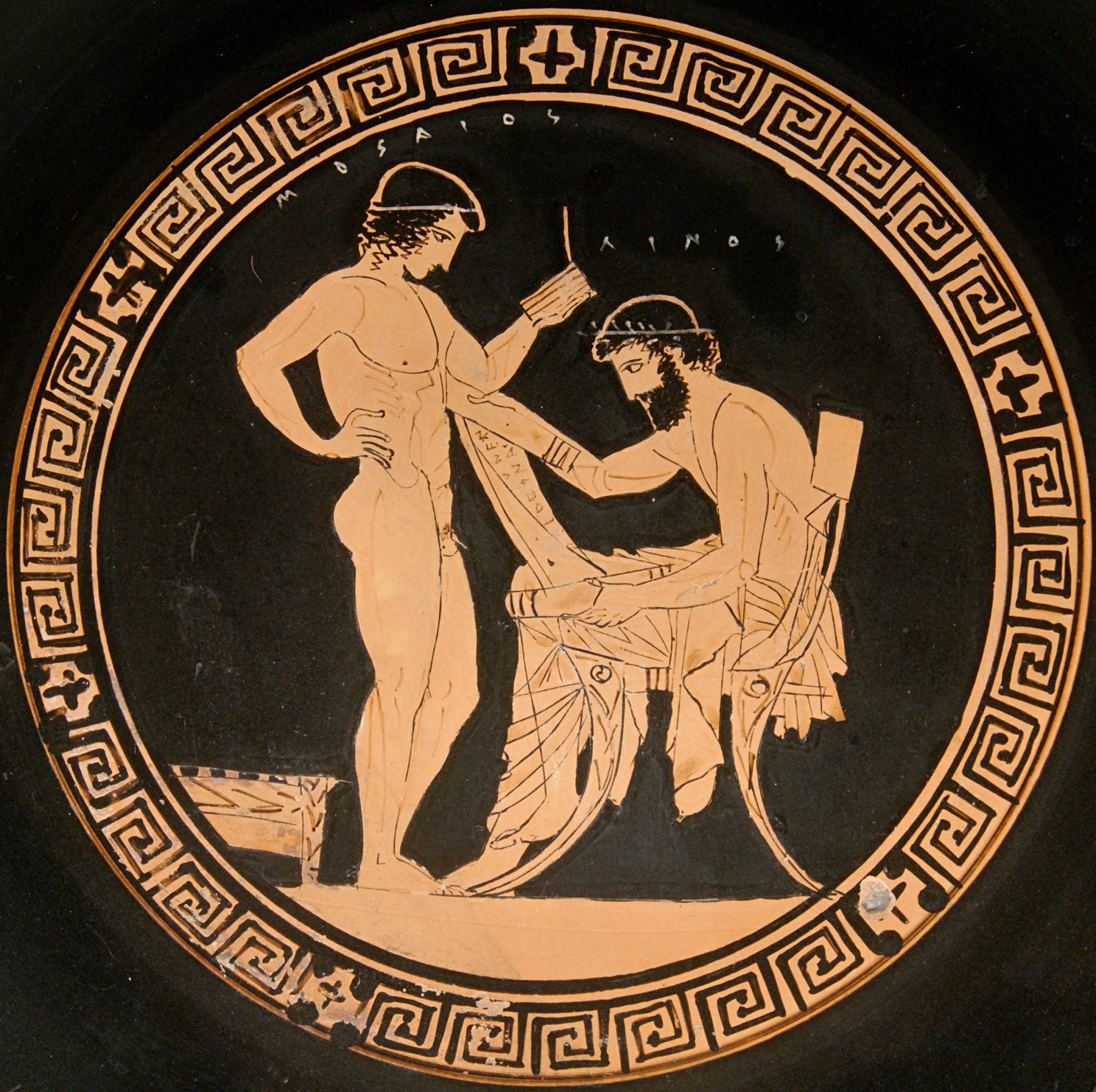Kylix by the Eretria Painter featuring Musaeus of Athens and Linus of Thebes (Louvre G457) 440-430 BCE
"These authors forget that the achievements which they attribute to the barbarians belong to the Greeks, with whom not merely philosophy but the human race itself began. For instance, Musaeus is claimed by Athens, Linus by Thebes. It is said that the former, the son of Eumolpus, was the first to compose a genealogy of the Gods and to construct a sphere, and that he maintained that all things proceed from unity and are resolved again into unity. He died at Phalerum, and this is his epitaph:
Musaeus, to his sire Eumolpus dear,
In Phalerean soil lies buried here;
and the Eumolpidae at Athens get their name from the father of Musaeus.
Linus again was (so it is said) the son of Hermes and the Muse Urania. He composed a poem describing the creation of the world, the courses of the sun and moon, and the growth of animals and plants. His poem begins with the line:
Time was when all things grew up at once;
and this idea was borrowed by Anaxagoras when he declared that all things were originally together until Mind came and set them in order. Linus died in Euboea, slain by the arrow of Apollo, and this is his epitaph:
Here Theban Linus, whom Urania bore,
The fair-crowned Muse, sleeps on a foreign shore.
And thus it was from the Greeks that philosophy took its rise: its very name refuses to be translated into foreign speech."
-Diogenes Laertius, Lives of the Philosophers 1.3-4
 |
| Kylix by the Eretria Painter featuring Musaeus of Athens and Linus of Thebes (Louvre G457) 440-430 BCE. Height: 9.9 cm; Width: 33.9 cm; Diameter: 25.4 cm. |
 |
| Linos (named, on the right) holds a papyrus roll while his pupil, Mousaios (named, on the left), holds writing tablets. Tondo from an Attic red figure cup. |
 |
| View of side A. Photograph by Maria Daniels, courtesy of the Musée du Louvre, January 1992. |
 |
| View of side A, from the right. Photograph by Maria Daniels, courtesy of the Musée du Louvre, January 1992. |
 |
| Bottom view. Photograph by Maria Daniels, courtesy of the Musée du Louvre, January 1992. |
 |
| View of side A, from below: two athletes between a man and a woman. Photograph by Maria Daniels, courtesy of the Musée du Louvre, January 1992. |
 |
| View of side B, from below: four nude athletes. Photograph by Maria Daniels, courtesy of the Musée du Louvre, January 1992. |
Source:
https://commons.wikimedia.org/wiki/File:Palaistra_scene_Louvre_G457.jpg
http://www.perseus.tufts.edu/hopper/artifact?name=Louvre+G+457&object=vase
https://www.flickr.com/photos/69716881@N02/9195931260/in/photostream/
Quote:
http://www.perseus.tufts.edu/hopper/text?doc=Perseus%3Atext%3A1999.01.0258









Comments
Post a Comment